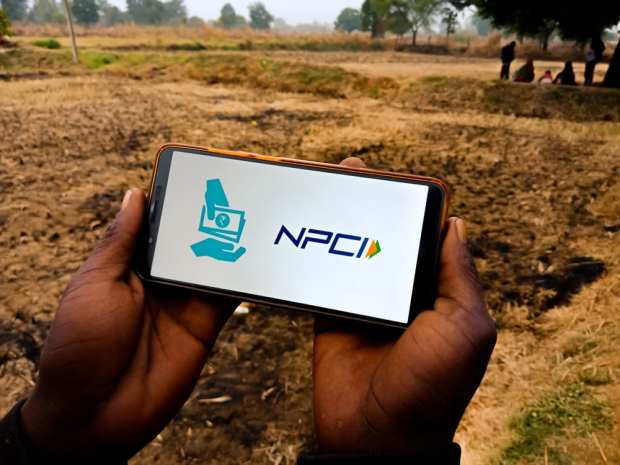India Bankers Seek Removal Of Fees On UPI, RuPay Transactions

In India, call it the war of the fees.
In the wake of the government’s elimination beginning this year of the merchant discount rate — the charge levied on merchants by banks as electronic payments are processed — at least some banks are looking for ways to offset the loss of that fee-based revenue.
Late last week, the India Banks Association (IBA), the representative body for the banking industry, wrote to the National Payments Corporation of India (NPCI), the umbrella organization for retail payments in the country, to ask the latter to remove some fees on UPI and RuPay transactions.
“The IBA managing committee has decided that with respect to zero merchant discount rates (MDR) on RuPay Card and UPI transactions, zero interchanges is acceptable to banking industry and NPCI should be requested to consider zero interchanges, zero switching fee, and zero-fee for payments service providers while implementing the government mandate,” the letter sent to NPCI said, as quoted by the Times of India.
As reported, the MDR charges have typically been 12 rupees ($.17) to 15 rupees on transactions of more than 2,000 rupees, and the cap is 60 basis points. Also, the government has mandated that companies with an annual revenue equivalent of more than $7 million must accept debit cards (including RuPay, of course). If these firms do not accept those payments, fines will be assessed — hefty ones, too, to the tune of 5,000 rupees a day.
The stated goal has been to boost digital payments, especially transactions across RuPay cards, which are domestically issued by the National Payments Corp. of India (NPCI). RuPay is a payment network offered by NPCI, Unified Payments Interface (UPI) and Unified Payments Interface Quick Response Code (UPIQRC).
By way of background: Interchange fees are the fees paid between banks — in this case from the merchants’ banks to the card-issuing banks. The switch fee is the fee paid by the banks to the network operators, a roster that includes NCPI. And then there’s also the PSP fee, which the banks pay for the service providers.
Caught In The Crossfire
The ones caught in the middle might be the FinTechs bringing new apps and services to the Unified Payments Interface (UPI), the digital payments network.
That’s because these tech upstarts depend on the fees to help fund their coffers. As Vishwas Patel, chairman of the Payment Council of India, told the Economic Times, “PSPs play a vital role in growing digital payments, and if this [fee] is not paid, these companies will start withdrawing the existing deployed terminals from unviable small shops and establishments.”
The banks? They may pull back on innovation, particularly within card products, and, in particular, within debit cards. That’s in part because forgoing the money paid from the merchant to the issuing bank might otherwise be spent on rewards of other programs.
And other critics have come out: As quoted in the Times of India, Sameer Nigam, CEO of Indian eCommerce payment and digital wallet company PhonePe, said that “Zero MDR killed acquiring banks’ revenues so they can’t afford to pay issuers any interchange. Without interchange and PSP fees, issuing banks also have no skin in the game left.”
The government may see at least some, and possibly significant, headwinds to digital adoption.
To get a sense of the scale of digital payments adoption that might be hampered, consider the fact that transactions reported by UPI in the October through December period of last year topped one billion in the quarter, up from 620 million in the previous year’s fourth quarter.
MoneyControl reported earlier this week that NPCI could lose a third of its revenue if it eliminates the interchange and switching fees on UPI and RuPay cards. One unnamed banker said that global expansion plans in place for NPCI could be hampered, which would impact the growth of digital payments in the region.
And in what seems to be a move toward treating payments like a utility, or as a partially subsidized service, the IBA has requested an acceptance development fund that would, in turn, be managed by the country’s central bank in the wake of being denied the practice of charging merchants fees for using the UPI and RuPay card rails.
As reported in Financial Express, bankers have estimated the annual loss tied to zero MDR would come in at Rs 5,000 crore, which equates to roughly $700 million annually.
The creation of a fund may be critical in the absence of the MDR fees, as it would help compensate banks and other stakeholders for fixed costs tied to running their businesses. Without some fund in place, fees might be gleaned elsewhere, through higher prices on other offerings (such as checking accounts), perhaps even through a pullback in issuing the very cards that the Indian government has championed — the RuPay cards.
Processing transactions, and expanding digital payments (which fosters financial inclusion) are not free endeavors. It costs money to make money, the old saying goes — and it costs money to move money. The continued jousting over fees, in what looks like a series of continuing bids to preserve margins, may translate into a game where no one wins.
